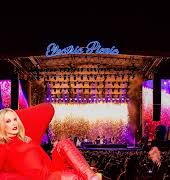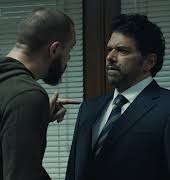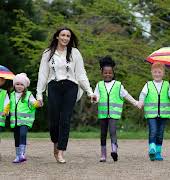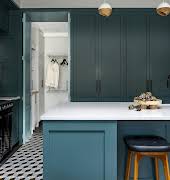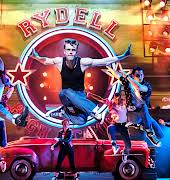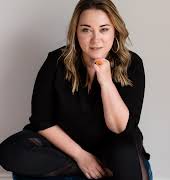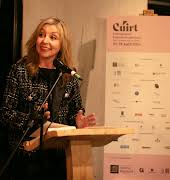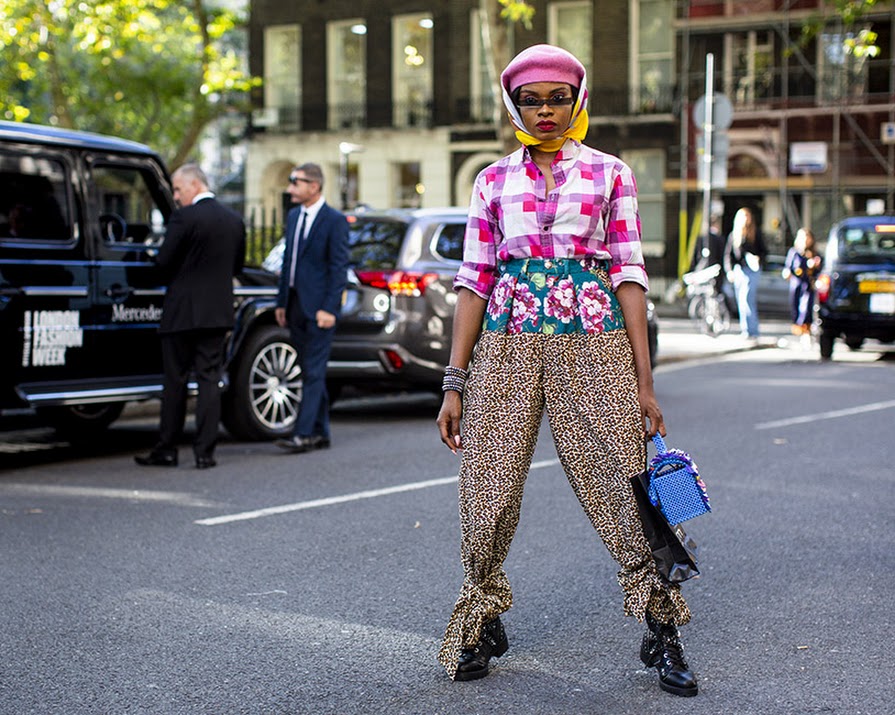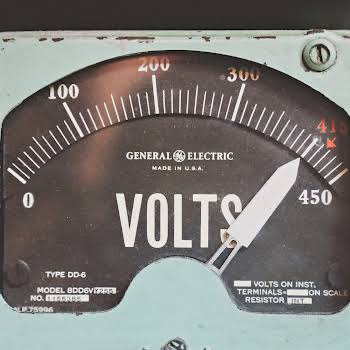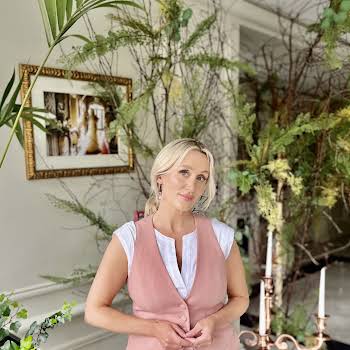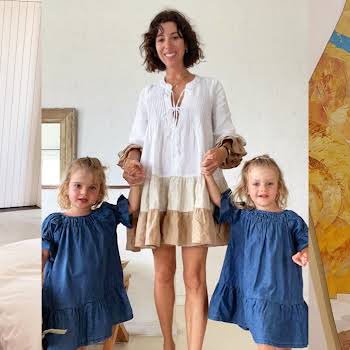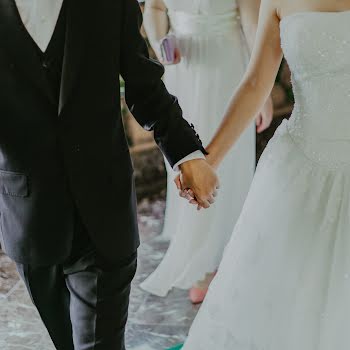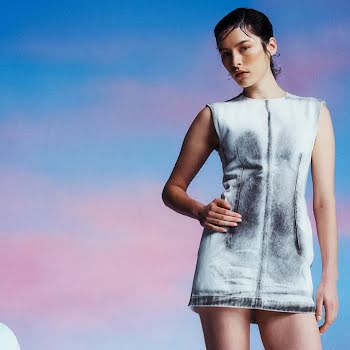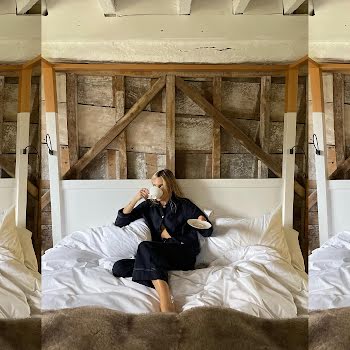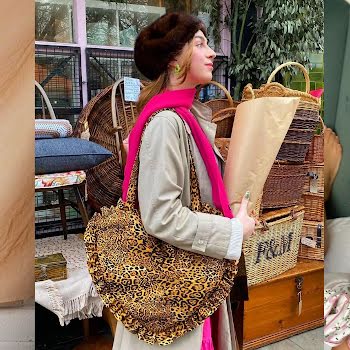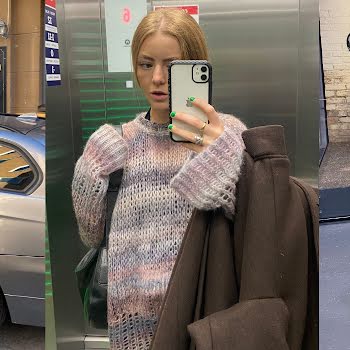
By Marie Kelly
05th Mar 2021
05th Mar 2021
Read time: 12 mins
Are trends more or less important now than they were in eras gone by? Marie Kelly suggests a new way to approach the idea of 'trendy' clothes - one that doesn't mean emptying your wardrobe every new season.
My mother is 77, and she frequently asks me if something is “in” or not. She grew up in an era when there was a right and a wrong way to dress, and “influencers” were movie stars and pop singers – far-off figures that appeared before you only on those rare occasions when you visited the cinema or a dance hall.
Staying on-trend was simple because fashion was a twice-yearly event. There were no pre-seasons, resort collections or must-have collabs. Trends were significant because they came straight from the houses of iconic designers before being endorsed by a few choice editors; there was undisputed authority behind them.
The spinning wheel of fashion turned so very gently then, giving women time to consider emerging looks and to buy, or make them, as my mother mostly did. Fashion wasn’t frenzied, and trends weren’t fads to be consumed and dispensed with as quickly as chewing gum.
Influencers and editors
These days, there’s a cohort of women on social media who can create or kill a look quicker than Tom Ford. There’s a wonderful line in The Devil Wears Prada where long-suffering art director Nigel says to Andy: “You still don’t get it, do you? Hers [Miranda’s] is the only opinion that matters.” In 2006, when the movie arrived in cinemas, fashion magazine editors were instrumental in determining what we wore.
Today, as we know, influencers sit on the front row at Fashion Week alongside them, and individuals such as Eva Chen and Jeanne Damas have as much clout with both brands and their customers as the likes of Anna Wintour.
Trends don’t matter the way they did in my mother’s day; they’re no longer a directive, primarily because they now come from so many sources. They mattered so much to my mother’s generation because they provided the thread you followed to fit in at a time when codes were strict and perspectives were narrow.
The first pair of trousers
In the 1950s, if a woman wore a pair of bag pants instead of a pencil or pleated skirt, she wouldn’t be noticed for her originality or unique sense of style, only for her subversiveness and probably her lack of femininity.
Katharine Hepburn is the perfect example of this. She wore trousers before it was fashionable in an era that prized glamour over androgyny and because of this, rumours were rife about her sexuality and “difficult” personality.

My mother remembers the first time she wore a pair of trousers in the late ’50s at the age of 18. Her middle-aged neighbour snubbed her as she returned home from a date with my dad. This woman considered it ‘common’ for a woman to wear trousers.
Despite this sartorial bravery in her teens, my mother has maintained that 1950s mindset of wanting to know what women are mostly wearing. She likes the sartorial safety net of being told that blouses are fashionable at this moment or cropped trousers are not. I think as much as anything, it helps her to navigate her wardrobe each morning.
Why do trends still have value?
This is one reason why trends will always have a value – they orientate us. Because what are trends really other than ideas? Wonderful, inspiring suggestions women can take or leave.
Fashion historian Ruth Griffin agrees: “Fashion trends are ultimately changing ideas and attitudes to how we dress… we are all motivated by differentiating ourselves from others through dress, so the search for the new and cool will always be important to us.”
Man Repeller founder Leandra Medine and fashion editor Harling Ross have argued the toss over the value of trends on the fashion and culture website. Harling says, “I don’t think of trends as good or bad. They’re just information. They also give fashion structure. Without them, it would just be apple sauce.”
Griffin explains that humans have sought out the “structure” Harling refers to since time began. “Going back in history, the very first form of human decoration was embellishing the body to indicate status and which tribe you belonged to.”
Whether or not trends still matter, for most women, finding their tribe certainly does. And the truth is that many of us do this through fashion. I know some of the friendships I value most have been forged over a love of great style and conversations about trends, designers and catwalk shows.
“I don’t ‘do’ trends”
I’ve often heard women say, with a tone of superciliousness, that they “don’t do trends”. Ubiquity leads to snobbery. Have you heard of animal print fatigue, for instance?
Griffin agrees: “Instagram has become saturated, and women are tired and overwhelmed by the speed at which they are being delivered ideas.”
The uncontrollable influx of fashion information – trends, micro-trends and “must-haves” – is in part responsible for the rise of Scandi style and labels like The Row, which operate independently of the prescribed seasonal looks.
Nobody wants to be seen to be a slave to the catwalks or an imitator rather than an originator, but then a palette of biscuit and beige isn’t for everyone either. I need colour and variety.
How we should think about trends
It’s easy to forget that trends are not just a prompter to splurge on new clothes; they’re also an invitation to shop your wardrobe. Isn’t it lovely when you read that leather trousers are in and then happily pull out the pair you bought several years ago?
Trend reports can ignite a renewed excitement in old clothes and imbue a fresh confidence when we wear them. The idea that buying a trendy item is the equivalent of choosing a throwaway piece is also a misnomer. Plenty of on-trend items come in sustainable fabrics and are made to last more than a season. Trends don’t have to be the death knell of sustainability.
The word “trend” is suffering the same fate as the term “feminism”. Over time, both have been imbued with all sorts of negative connotations and associations. But both have value and context in women’s lives, as long as we understand how to embrace them in a positive fashion.
This article originally appeared in the October 2019 edition of IMAGE Magazine.

